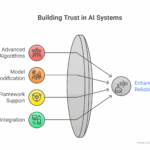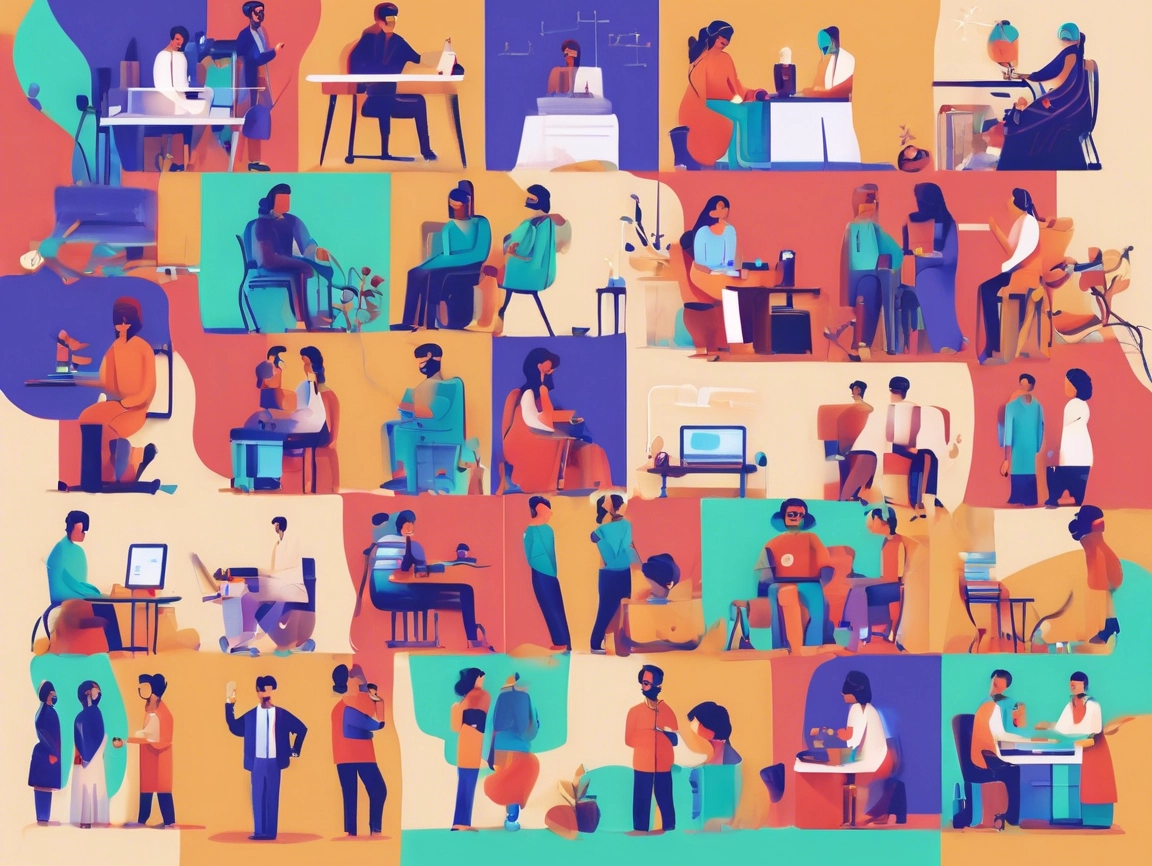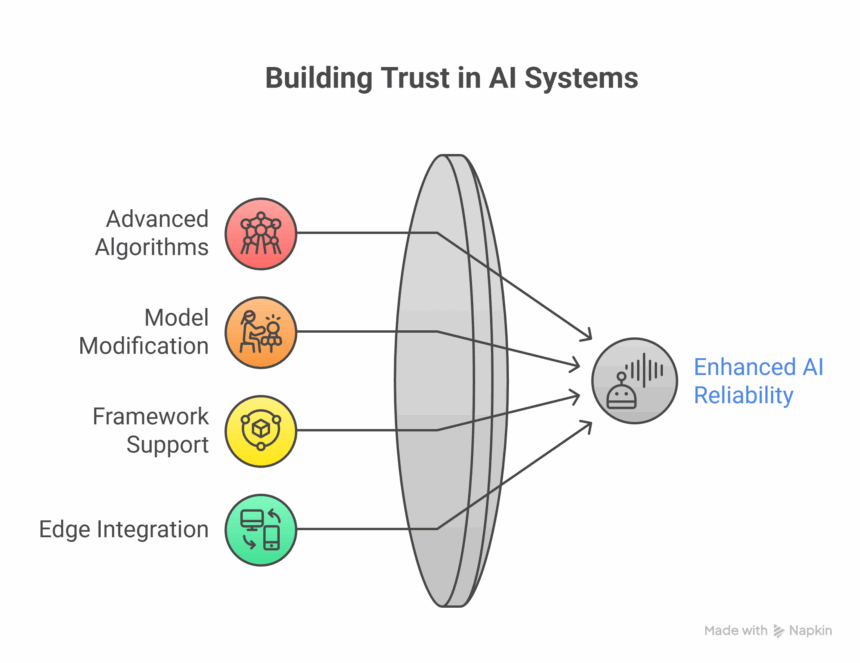OpenAI’s o3 and o4-mini are set to enhance AI creativity in India. These models aim to drive innovation across various sectors, including healthcare and agriculture, by providing advanced solutions tailored to local needs. With over 4,200 AI startups in the country, these advancements can impact the innovation scene, unlocking new solutions to challenges and fostering a culture of creativity and collaboration. For additional insights on AI innovation, check out MLExperts Blog.
Understanding o3 and o4-mini’s Impact on AI Creativity
Features of o3 and o4-mini
OpenAI’s o3 model stands out in reasoning and creativity, achieving a 75.7% score on the ARC-AGI benchmark, which shows its ability to tackle difficult problems and generate innovative solutions. In contrast, o4-mini is designed to be a simpler version of o3, focusing on efficiency and catering to resource-conscious innovators in India. Both models utilize advanced techniques such as:
- Deep Reasoning: Analyzing challenging problems to uncover core principles.
- Conceptual Blending: Merging ideas from different fields to create innovative solutions.
- Iterative Refinement: Enhancing ideas through feedback to ensure quality and novelty.
How They Generate Innovative Ideas
The innovative capabilities of o3 and o4-mini stem from their unique methodologies. They can propose solutions for local challenges, such as:
- Water Purification: Suggesting solar-powered purification systems using local materials.
- Traffic Management: Developing AI-driven systems to optimize urban traffic flow.
This combination of techniques allows them to generate ideas that are both creative and practical for addressing real-world issues in India.
Potential Applications in India
The applications of o3 and o4-mini in India are vast and varied. They can help address local issues, including urban overcrowding and agricultural challenges, by democratizing innovation. Small teams can brainstorm and develop solutions without the need for expensive resources, fostering a collaborative environment that encourages interdisciplinary efforts. This approach aligns with India’s goals for Digital India and sustainable development, enhancing the country’s global competitiveness in the AI field.
Transforming Key Sectors with AI Innovation
Revolutionizing Healthcare Solutions
In the healthcare sector, o3 can propose low-cost diagnostic tools tailored to India’s diverse population, significantly improving accessibility. For example, it could suggest a diagnostic tool for tuberculosis that is affordable and easy to use in rural areas. The o4-mini model can personalize care recommendations based on individual needs, making healthcare services more effective and responsive. Additionally, both models can accelerate drug discovery processes, benefiting India’s pharmaceutical industry by reducing time and costs associated with developing new medications. For further insights on AI in healthcare, visit Healthcare AI.
Innovating Agriculture Practices
In agriculture, o3 might suggest innovative crop strategies and smart irrigation systems to enhance productivity and sustainability. For instance, it could propose a hybrid crop variety suited for arid regions, while the o4-mini model can analyze market trends to assist farmers in selecting high-value crops, ultimately boosting their income. By providing tailored solutions, these models can help farmers optimize their practices and improve food security across the country. To explore additional AI solutions for agriculture, check out Agriculture AI.
Enhancing Education and Research
AI-driven solutions can also transform education in India. The o3 and o4-mini models can personalize learning experiences for students, catering to diverse educational needs. For example, they could create adaptive learning platforms that adjust content according to individual progress. They can support academic research by generating hypotheses and analyzing data efficiently, leading to new insights and advancements in various fields of study. This personalization can enhance educational outcomes and foster a more inclusive learning environment.
Challenges and Ethical Considerations in AI Adoption
Addressing Accessibility Issues
While the computational power of o3 is impressive, it may limit accessibility in smaller towns across India. The o4-mini’s efficiency helps mitigate this issue, but there is still a need for affordable cloud infrastructure to support widespread AI adoption. Ensuring that all innovators can access these technologies is important for fostering an inclusive AI ecosystem.
Ensuring Cultural Relevance
For AI solutions to be effective in India, they must resonate with local traditions and practices. Developers need to ensure that the proposed solutions align with the cultural context of the communities they assist. For instance, AI applications in agriculture should consider traditional farming methods to ensure acceptance and effectiveness. This cultural fit is key for the successful implementation of AI technologies across diverse regions in the country.
Maintaining Ethical Standards
As with any technological advancement, ethical considerations must be addressed. Questions regarding the ownership of AI-generated ideas and the safety of proposed solutions are important. Developers must ensure transparency in how AI models are used and engage in rigorous testing to validate the practicality and safety of their suggestions. Continuous dialogue within the AI community is necessary to navigate these challenges responsibly, including discussions on ethical frameworks and community engagement strategies.
The Future of AI in India
OpenAI’s o3 and o4-mini represent a leap in AI creativity, poised to empower India’s innovators. These models can drive solutions across various sectors, enhancing the quality of life for millions. Embracing these technologies will be important for India’s journey toward a sustainable and inclusive future. As we explore the potential of AI together, let’s reach out to discuss how we can approach this exciting field and make the most of these advancements. Contact us at MLExperts for additional insights and support.
Frequently Asked Questions
What are the unique features of o3 and o4-mini?
o3 stands out in reasoning and creativity, achieving a 75.7% score on the ARC-AGI benchmark, while o4-mini is designed for efficiency and accessibility, making it suitable for resource-conscious innovators.
How can startups use these AI models?
Startups can use o3 and o4-mini to brainstorm innovative solutions, optimize operations, and develop new products without incurring high costs.
What impact can o3 have on rural communities?
o3 can propose affordable tools tailored to rural needs, such as irrigation systems and health applications, enhancing accessibility and improving quality of life.
Is o4-mini suitable for small teams?
Yes, o4-mini’s efficiency makes it ideal for small teams and startups, allowing them to utilize advanced AI without significant financial investment.
What ethical concerns should be considered with creative AI?
Ethical concerns include ownership of AI-generated ideas, safety of proposed solutions, and the need for transparency in AI usage to build trust within communities.
How can students benefit from these AI innovations?
Students can use o4-mini to generate project ideas, explore research topics, and enhance their learning experiences, leveling the academic playing field.












